I’ll never forget the day I stumbled upon a hidden guitar fingerpicking technique that revolutionized my playing. It was like unlocking a secret door to a world of musical possibilities. As someone who’s been strumming since childhood, I thought I knew it all—until that moment. What if I told you that this technique could transform your playing in ways you never imagined? My journey from Germany to the San Francisco Bay Area has been filled with such discoveries, and now, I’m here to share them with you. In this guide, we’ll explore the essential guitar fingerpicking exercises that have been crucial to my development as a guitarist. Whether you’re a beginner or looking to refine your skills, these techniques will help you master the art of fingerpicking and unlock your true potential on the guitar.
Understanding Fingerpicking Basics
Thumb Position and Technique
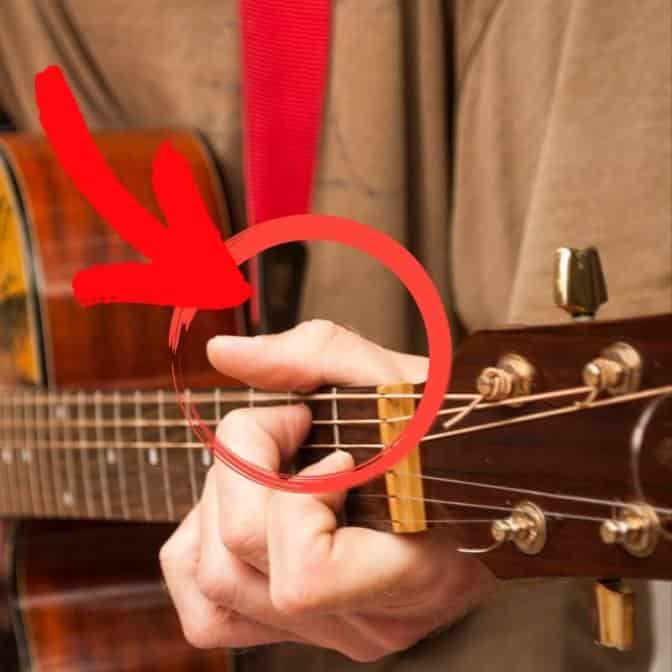
In my years of performing and teaching, I’ve found that proper thumb technique is the foundation of good fingerpicking. The thumb’s role is crucial, acting as the bass voice and providing rhythmic stability. I position my thumb parallel to the strings, slightly curved, and use the fleshy part to strike. This thumb position in fingerpicking allows for both power and control.
Through blending classical and folk styles, I’ve discovered that varying the thumb’s attack point can dramatically alter the tone. Striking closer to the bridge produces a brighter sound, while plucking near the fretboard yields a warmer tone. I often advise my students to practice alternating bass patterns with just the thumb to build strength and consistency. Remember, a relaxed thumb is key to preventing fatigue during extended playing sessions. As you progress, you’ll find that a well-trained thumb becomes second nature, freeing your fingers to create intricate melodies above the steady bass line.
Finger Placement and Movement

After mastering thumb position, let’s focus on finger placement and movement. My experience in both recording albums and performing live has taught me the importance of efficient fingerpicking techniques. I’ll guide you through methods I’ve refined over years of playing diverse styles, from folk to jazz. Proper finger placement is crucial for clean, articulate notes. Position your fingertips just behind the strings, ready to pluck with a slight curling motion. As you practice, focus on maintaining a relaxed hand posture while executing precise movements.
One technique I’ve found particularly effective is to practice finger independence exercises. Start by plucking individual strings with each finger, gradually increasing speed and complexity. This builds dexterity and control, essential for more advanced fingerpicking patterns. Remember, consistent practice is key to developing muscle memory and fluidity in your movements.
Essential Fingerpicking Exercises for Beginners
Simple Alternating Bass Patterns

When I first started out, simple alternating bass patterns were crucial in developing my fingerpicking skills. These easy fingerpicking exercises lay the foundation for more complex techniques. I’ll share a pattern I still use today, refined through my experiences recording albums like ‘On My Way’ and ‘Postcards’. Start by alternating your thumb between the 6th and 4th strings while plucking the 1st string with your index finger. Maintain a steady rhythm, counting “1-and-2-and-3-and-4-and”. As you progress, try incorporating the 3rd string with your middle finger on beats 2 and 4. This exercise builds finger independence and helps establish a solid rhythmic foundation. Remember, consistency is key – I spent countless hours perfecting this pattern, and it’s still a staple in my warm-up routine before performances or studio sessions.
Arpeggios and Rolling Patterns

As we move beyond basic patterns, arpeggios and rolling patterns become essential fingerpicking exercises that elevate your playing. I’ve spent countless hours perfecting these techniques, and they’re now integral to my signature sound. To start, I’ll guide you through a simple C major arpeggio: pluck the bass note with your thumb, then roll your index, middle, and ring fingers across the higher strings. Feel the fluidity in your movements as you repeat this pattern, gradually increasing speed.
Next, we’ll explore rolling patterns, which I often use to create a flowing, cascading effect in my compositions. Begin with a four-finger roll: thumb, index, middle, ring. Practice this pattern on various chord shapes, focusing on maintaining a steady rhythm. As you progress, experiment with different rolling sequences to add depth and complexity to your playing. These exercises will significantly enhance your fingerpicking repertoire, paving the way for more advanced techniques we’ll explore later.
Progressing to Intermediate Techniques
Travis Picking
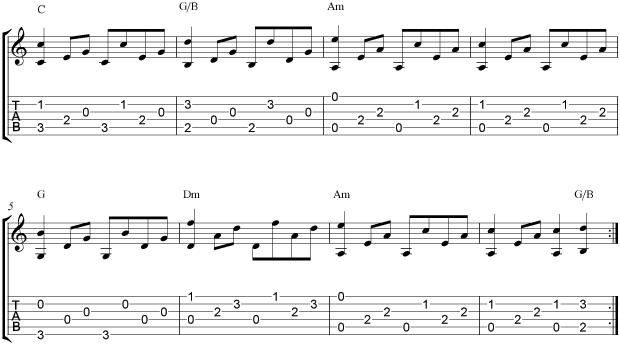
As we progress to intermediate techniques, Travis picking stands out as a cornerstone of fingerpicking styles. I’ve spent countless hours perfecting this technique, and it’s become an integral part of my musical repertoire. Travis picking involves alternating bass notes with the thumb while playing melody notes with the fingers, creating a full, rhythmic sound that’s both challenging and rewarding.
In my fingerpicking tutorial sessions, I often emphasize the importance of developing a steady thumb pattern first. Once that’s mastered, I guide students through incorporating melody notes with their fingers. This technique has been crucial in developing the versatile sound you hear in my performances. It’s not just about playing notes; it’s about creating a cohesive, flowing rhythm that forms the backbone of many folk and country songs. With practice, Travis picking can become second nature, opening up a world of musical possibilities.
Syncopated Patterns
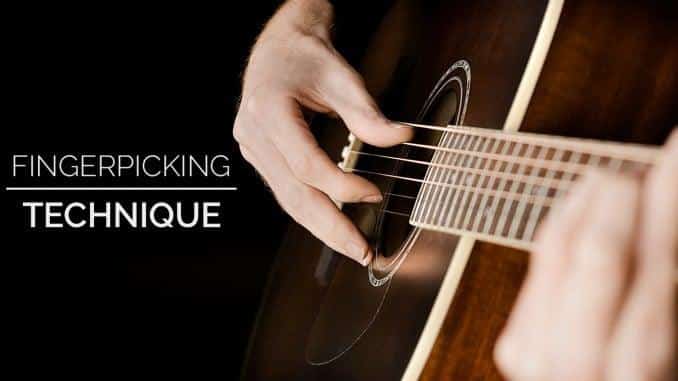
As we delve deeper into intermediate techniques, syncopated patterns offer a thrilling way to improve fingerpicking skills. My exploration of jazz and world music has deeply influenced my approach to these rhythms. I’ll guide you through exercises that have helped me incorporate syncopation into my fingerstyle playing, adding complexity and interest to your compositions.
To master syncopated patterns, start by practicing off-beat accents with your thumb. Then, gradually introduce your fingers, creating unexpected rhythmic shifts. I’ve found that combining syncopation with arpeggios can yield particularly captivating results. As you progress, try integrating these patterns into familiar songs, allowing the syncopation to breathe new life into well-worn melodies. Remember, the key is to maintain a steady pulse while emphasizing unexpected beats. This technique will not only enhance your fingerpicking repertoire but also sharpen your overall sense of rhythm and timing.
Exploring Different Fingerpicking Styles
Classical Fingerstyle Techniques

As a classically trained guitarist, I’ve found that classical fingerstyle techniques form the bedrock of my fingerpicking journey. These techniques, rooted in centuries of tradition, offer a wealth of possibilities for contemporary players. In my experience, mastering classical guitar fingerstyle has significantly enhanced my overall fingerpicking prowess.
The precision and control demanded by classical techniques have been invaluable in my performances and recordings. I’ve incorporated elements like rest strokes for melody lines and free strokes for accompaniment, which add depth and texture to my playing. The classical approach to nail shaping and hand positioning has also been crucial in achieving a clean, resonant tone across various styles.
By exploring classical fingerstyle, you’ll develop a solid foundation that translates beautifully to other fingerpicking styles, elevating your overall guitar mastery.
Flamenco-Inspired Fingerpicking

While I’m not a flamenco specialist, I’ve discovered that incorporating flamenco-inspired techniques can add incredible depth and flair to fingerpicking. Through collaborations with diverse musicians, I’ve learned to integrate the rasgueado technique—a rapid strumming pattern—into my fingerpicking repertoire. This technique involves using individual fingers to create a fan-like motion, producing a percussive, rhythmic effect that’s quintessentially flamenco.
I’ve found that practicing flamenco guitar fingerpicking patterns has significantly improved my finger independence and speed. The picado technique, which involves rapid single-note runs, has been particularly beneficial for developing precision in my fingerpicking. By incorporating these elements, I’ve been able to infuse my playing with a passionate, dynamic quality that’s characteristic of flamenco. This fusion not only expands my stylistic range but also enhances my overall fingerpicking proficiency, demonstrating the value of exploring diverse techniques in guitar mastery.
Developing a Practice Routine
Daily Fingerpicking Drills
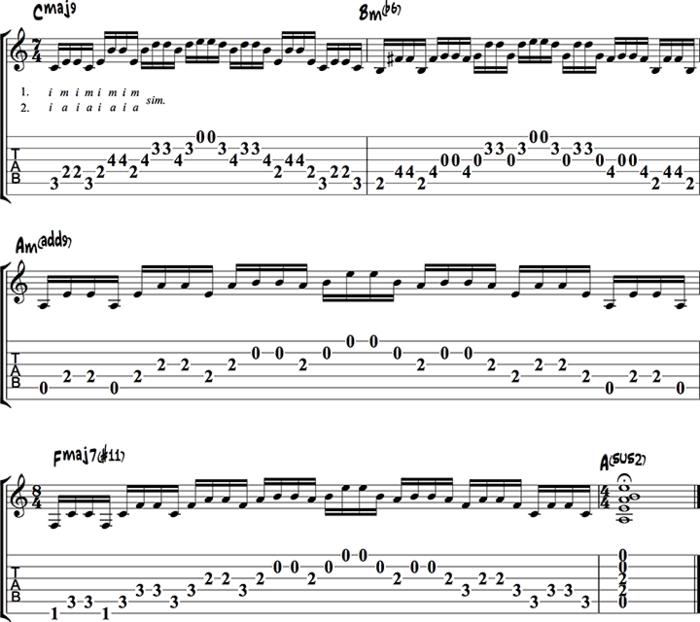
In my journey as a guitarist, I’ve found that daily fingerpicking drills are crucial for maintaining and improving skills. These guitar exercises for fingerpicking have been my constant companions, from my early days to preparing for album recordings and performances. I start each practice session with a series of drills that target specific aspects of fingerpicking technique.
My routine typically includes alternating bass patterns, arpeggios, and rolling exercises. I focus on finger independence and timing precision, gradually increasing speed and complexity. One of my favorite drills involves playing simple chord progressions using various fingerpicking patterns, which helps me internalize the movements and develop muscle memory. By dedicating time to these exercises daily, I’ve noticed significant improvements in my overall fingerpicking ability and flexibility.
Consistency is key – even on busy days, I make sure to squeeze in at least 15 minutes of these drills. This disciplined approach has been instrumental in honing my craft and preparing me for more advanced techniques.
Incorporating Songs into Practice

Incorporating songs into my practice routine has been a game-changer for my fingerpicking journey. I always recommend my students start with beginner fingerstyle songs that are both enjoyable and educational. Songs like “Dust in the Wind” by Kansas or “Landslide” by Fleetwood Mac have simple patterns that reinforce fundamental techniques while keeping practice sessions engaging. As you progress, gradually introduce more complex pieces like Beatles classics or folk ballads.
I’ve found that working on actual songs not only improves technical skills but also enhances musicality and timing. It’s crucial to choose pieces that challenge you slightly without being overwhelming. Remember, the goal is to apply the exercises we’ve covered in a musical context. This approach has consistently helped my students stay motivated and make tangible progress in their fingerpicking abilities.
Tips for Improving Your Fingerpicking Skills
Maintaining Proper Hand Posture
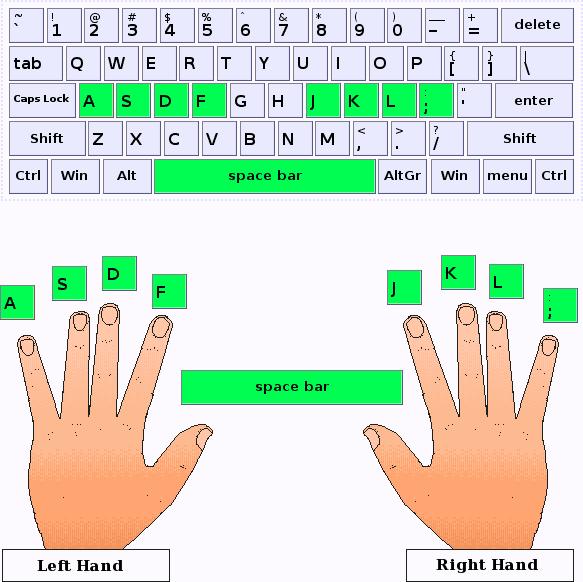
As I’ve learned over decades of playing, maintaining proper hand posture is crucial when learning how to fingerpick guitar. I always ensure my wrist is slightly arched, not flat against the guitar body. This position allows for greater flexibility and reduces strain during long practice sessions or performances. I keep my fingers curved, imagining I’m holding a tennis ball. This posture enables quick, precise movements and prevents fatigue.
I’ve found that anchoring my pinky finger on the guitar’s body can provide stability, especially for beginners. However, as you progress, I recommend gradually reducing this anchor to increase mobility. Remember, relaxation is key. I periodically check for tension in my hands and shoulders, consciously releasing any tightness. By prioritizing proper posture, you’ll develop clean technique and avoid potential injuries, setting a solid foundation for advancing your fingerpicking skills.
Developing Finger Independence

Developing finger independence has been crucial in shaping my versatile style. Through years of fingerstyle training, I’ve discovered that the key to intricate arrangements lies in the ability to control each finger independently. I’ll share exercises that have been instrumental in enhancing my dexterity and control, which you’ll hear in my albums.
Start by practicing simple finger isolation exercises. Place your hand on a flat surface and lift each finger individually, holding for a few seconds. Gradually increase the complexity by combining different finger movements. Spider walks are particularly effective: walk your fingers up and down the fretboard, ensuring each finger moves independently. Another favorite technique of mine is to play arpeggios while deliberately varying the attack and volume of each finger.
Remember, patience is crucial. These exercises may feel awkward at first, but consistent practice will lead to noticeable improvements in your fingerpicking skills.
FAQs
What is fingerpicking in guitar playing?
What are some essential fingerpicking exercises for beginners?
1. Alternating thumb technique: Practice plucking bass strings with your thumb.
2. Arpeggio patterns: Start with simple patterns using your thumb, index, and middle fingers.
3. Travis picking: Learn this popular fingerpicking style that alternates the thumb with other fingers.
4. Single string exercises: Practice picking individual strings to improve accuracy and control.
5. Chord progression exercises: Apply fingerpicking patterns to basic chord progressions.
How can I improve my fingerpicking technique?
1. Practice regularly with a metronome to develop rhythm and timing.
2. Start slow and gradually increase speed as you become more comfortable.
3. Focus on maintaining proper hand positioning and finger placement.
4. Learn and practice various fingerpicking patterns and styles.
5. Study and emulate fingerpicking techniques of accomplished guitarists.
6. Record yourself playing and analyze areas for improvement.
7. Incorporate fingerpicking exercises into your daily practice routine.
What is the proper hand position for fingerpicking?
1. Resting your wrist on the bridge of the guitar.
2. Keeping your hand relaxed and fingers slightly curved.
3. Positioning your thumb for easy access to the bass strings (E, A, and D).
4. Aligning your index, middle, and ring fingers with the higher strings (G, B, and high E).
5. Maintaining a consistent angle between your fingers and the strings for optimal plucking.
Remember to keep your movements efficient and minimize unnecessary tension in your hand and fingers.
What are some common fingerpicking patterns for beginners?
1. Basic alternating bass: Thumb plays bass notes while index and middle fingers alternate on higher strings.
2. Rolling pattern: Thumb, index, middle, ring fingers play in sequence across the strings.
3. Travis picking: Thumb alternates between bass strings while other fingers play melody notes.
4. Ascending/descending arpeggio: Playing notes of a chord in sequence from low to high or high to low.
5. Waltz pattern: A 3/4 time pattern often used in folk music.
Start with these patterns and gradually build complexity as your skills improve.
Conclusion
Are you ready to embark on a lifelong journey of musical discovery through fingerpicking? As we conclude this guide, I’m reminded of why I fell in love with this technique decades ago. Fingerpicking isn’t just a skill; it’s a gateway to expressing yourself through your instrument in ways you never imagined.
Throughout my years of playing, teaching, and writing about guitar, I’ve seen countless students transform their musical abilities through dedicated practice of these exercises and techniques. The joy of mastering a complex pattern, the satisfaction of playing your favorite song with newfound dexterity – these moments are what make the journey worthwhile.
Remember, the key to improve fingerpicking skills lies in consistent practice and patience. Embrace the challenge, and you’ll unlock a world of musical possibilities. As you continue on this path, know that each small improvement brings you closer to your goals. Happy picking!